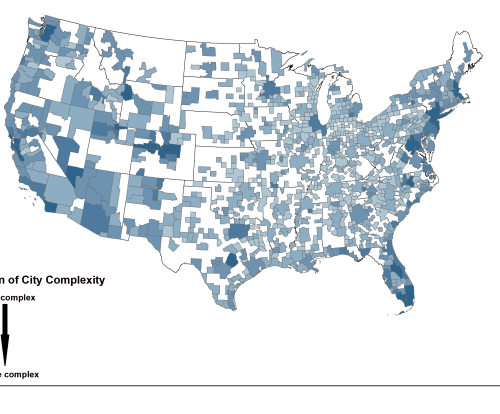The last time the U.S. enacted major immigration reform was the Immigration Reform and Control Act in 1986. Since then, little has been done to fix what has become a broken system despite heated debate at the national, state, and local levels.
Unfortunately, the immigration debate has also become increasingly disconnected from the exigencies of the U.S. economy, even in the aftermath of the COVID-19 pandemic in which worker shortages and labor market dysfunction have become increasingly glaring. Worse still, the aging U.S. workforce and structural shifts toward a more service-oriented economy will likely deepen much of this dysfunction unless policymakers can agree to major reforms to shore up the U.S. workforce.
This report aims to support these necessary reforms by highlighting the areas of the economy that are most in need of workers. Importantly, our approach not only highlights occupations that are—and will continue to be—in greatest demand, but also the occupations that are most complementary to the existing workforce, ensuring that efforts to meet these labor market needs will support all workers. At the core is a framework that we call the Occupational Opportunity Network, which identifies strategic occupations that will be in high demand for the next decade; are historically immigrant intensive; and have a high degree of complementarity with other occupations. In short, we define highly complementary occupations as those that are central to the U.S. workforce in the sense that they are used as inputs to many different industries and, within those industries, tend to augment the employment of other workers.
This framework can support immigration reform efforts in Congress and the executive branch—for instance, when considering the scale of any expansion in the number of H1B (specialty, high education) and H2 (temporary services) visa categories or in devising new policies, possibly including some of those that we discuss at the end of the report.
We show that the H2B visa program should be expanded to accommodate increased hiring of hospitality workers, drivers, construction workers, and care workers. Similarly, the H1B visa program should be expanded to accommodate increased hiring of health care workers, executives, and engineers, among others.
It is important to note at the outset that the jobs that we identify as high-value needs for the economy are not intended to be used as explicit targets for policy. Immigration system reforms will necessarily need to be broad-based, and we assume that the market will allocate workers most efficiently, an assumption that is bolstered by research showing that immigrants are highly efficient equilibrators of labor markets. This report is instead meant to outline the nature and scale of the workforce problems that the U.S. currently faces and to highlight the effects that different types of reforms will likely have in alleviating the wide-ranging labor market dysfunction that exists.
We begin by describing the current U.S. labor market context, noting the important distortions caused by the pandemic and their relationship to the immigrant workforce. Next, we present our detailed framework, the Occupational Opportunity Network. Finally, we offer some practical policy applications.








